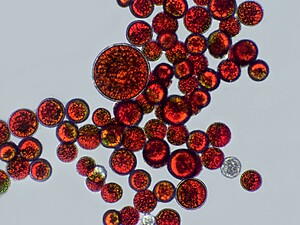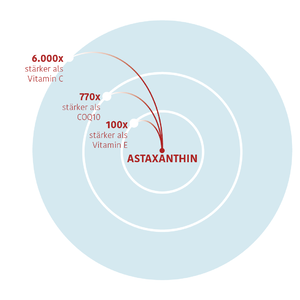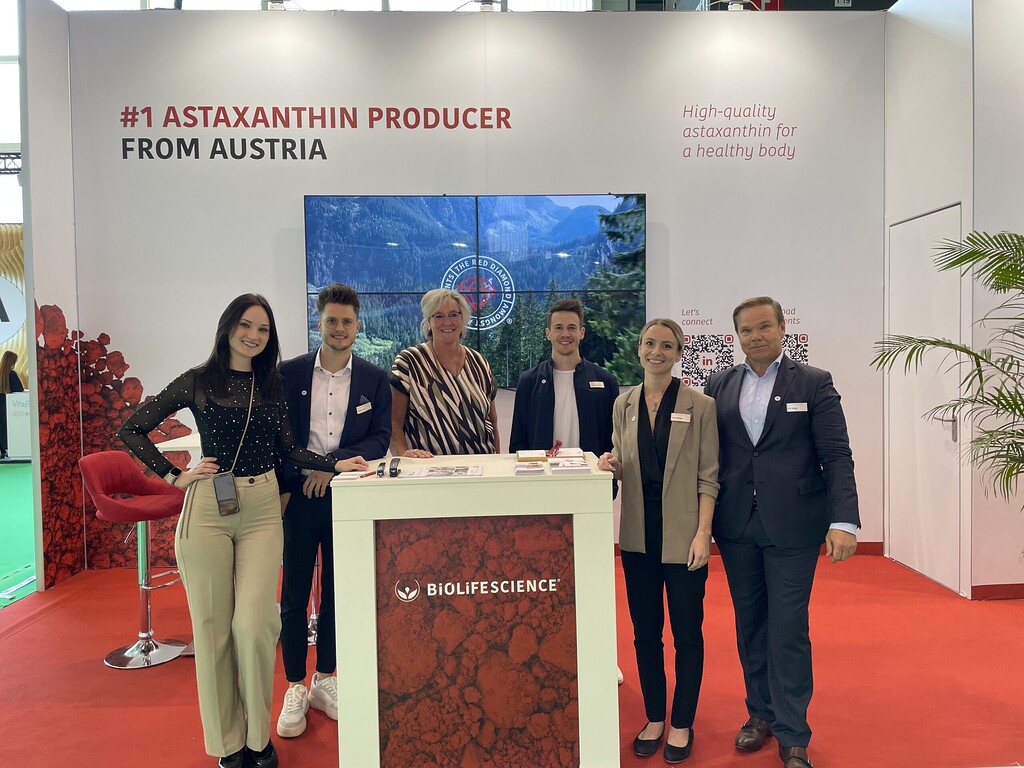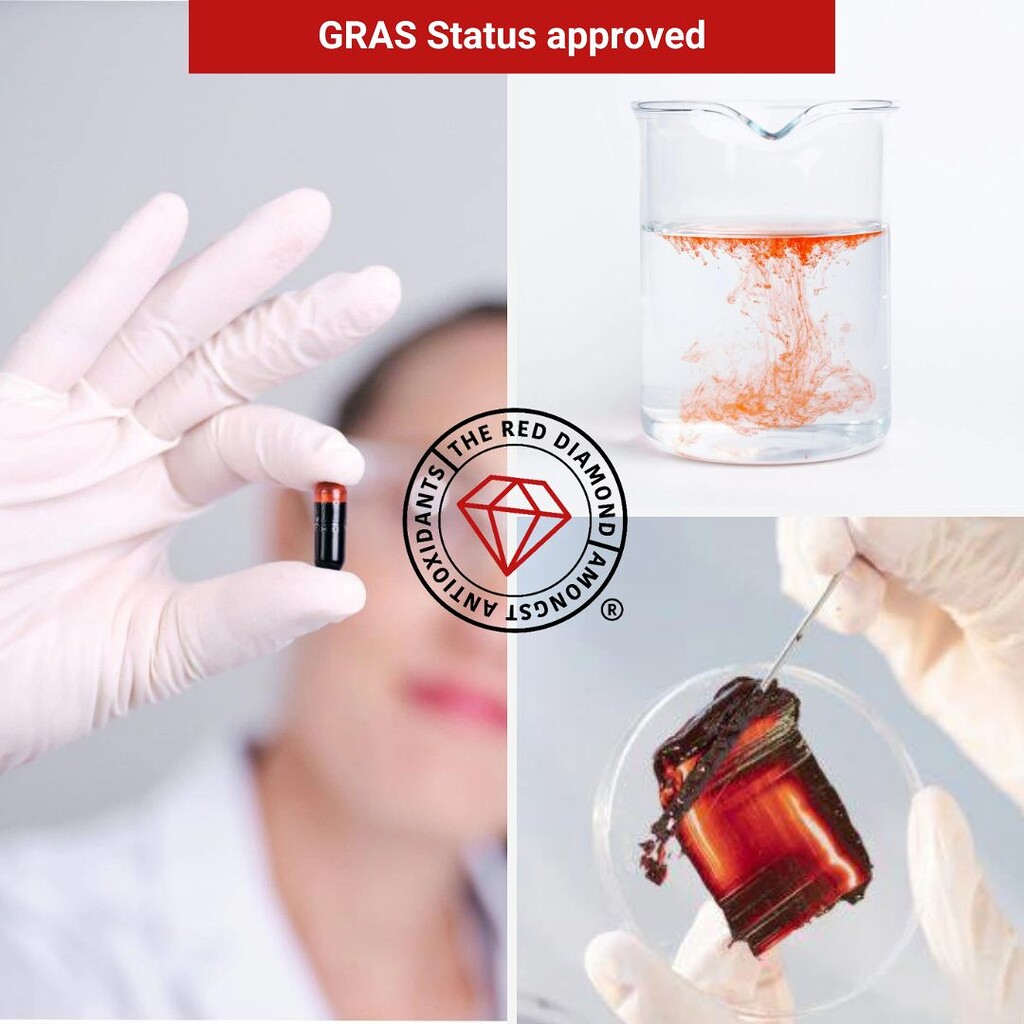Astaxanthin, the immune system and Covid-19
Abstract
The global population is becoming increasingly health-conscious as a result of Covid-19, with the immune system taking centre stage. BDI-BioLife Science reveals how the most powerful, naturally occurring antioxidant, astaxanthin, boasts a number of health benefits and scavenges free radicals to boost and protect the immune system.
For more than a year, the Covid-19 pandemic has been demonstrating the negative sides of globalisation. In no time at all, the deadly virus spread across the globe, infecting millions of people, causing hundreds of thousands of deaths and pushed health systems, and the global economy, to their limits. Despite medical advances and the rapid development of vaccines, this small virus continues to rage. Citizens around the world are hoping that the rapid vaccination roll-out will allow normality to resume. Within these hopes of eating out, enjoying concerts, going to museums, travelling and celebrating events, lies the reality that our health is a precious commodity.

The microalgae Haematococcus pluvialis produces the red pigment astaxanthin in stress situations for its own protection.
Understanding immunity
To truly understand health is to understand the complexity of the human immune system. This highly complex and sensitive network is distributed in and around the entire organism – organs such as bone marrow, thymus, spleen, tonsils and lymph nodes are just as much a part of it as special blood cells and the intestinal tract, which is home to around 70% of our immune cells. Without an immune system, the body would be defenceless against both harmful environmental influences and health-damaging changes within.
The immune system is divided into the innate (non-specific) immune system and the acquired (specific) immune system. Both defence systems are closely interconnected and complement each other in every reaction against a pathogen or harmful substance. In doing so, they take on different tasks. The innate immune system fends off pathogens in general (non-specific). It works primarily with immune cells, such as the ‘scavenger cells’ or ‘killer cells’, which are specialised in recognising virus-infected and tumour-like body cells and dissolving them with the help of cell toxins (cytotoxins). If the innate immune system does not succeed in destroying the pathogens, the acquired immune system takes over, which includes the following elements: T-lymphocytes in the tissue between the body cells; B-lymphocytes, also in the tissue between the body cells and antibodies in the blood; and other body fluids. The acquired immune system targets (specifically) the pathogen that causes the infection. Although the specific immune system takes a little longer to recognise the pathogen, the invader is fought with great accuracy and rendered harmless. Another advantage of the specific immune system is that it can remember the attacker. Thus, the defence reaction sets in more quickly in the event of renewed contact with a pathogen that is already known. This defence memory is the reason why some diseases are only contracted once in a lifetime or why immunity is granted after overcoming an infection. The effect is exploited, among other things, in immunisation through vaccination. Since the specific defence system is always adapting, the body also manages to fight bacteria and viruses that change over time. Vaccination is therefore a favourable method of defence against a new pathogen.
Support the immune system
Numerous studies show that a balanced lifestyle, sufficient exercise, sunlight and fresh air, as well as a varied, balanced diet, play an important role in
strengthening the immune system and improving the body’s natural response to infections. A balanced diet with natural, seasonal foods – such as fruits, vegetables, nuts and seeds – provides the body with an ideal supply of important micronutrients and strengthens the immune system. Micronutrients play a crucial role in the reproduction of the immune system’s fighter cells. The studies for many vitamins, minerals or secondary plant substances are very extensive in this context. This is reflected in the use of the official health claims permitted in the EU in the food supplement sector.
You can’t make an omelette without breaking eggs
The defence mechanisms of the immune system (immune reactions) can produce so-called free radicals, which cause chain reactions and attack our cells. The excess of oxidative substances and the increased formation of free radicals is called oxidative stress. This chemical imbalance has been shown to accelerate the ageing process and is involved in the development of various diseases. Antioxidants therefore play a special role because they ensure the maintenance of a desirable oxidative balance. The antioxidants vitamin C, vitamin E, vitamin B2, as well as zinc, selenium, copper and manganese contribute to the protection of the cells against oxidative stress. As a new, highly effective group of antioxidants, carotenoids have become the focus of interest in food supplements. Among them is astaxanthin – the most powerful naturally occurring antioxidant. Natural astaxanthin is industrially extracted mainly from the green alga Haematococcus pluvialis. The alga produces the red pigment astaxanthin in stress situations (for example, high salt content in the water, nitrogen deficiency, high temperatures and UV light) for its own protection. This natural form represents the highest-quality astaxanthin with the highest antioxidant potential. Studies show that astaxanthin scavenges free radicals much
more effectively than other members of the carotenoid family or vitamin E. Numerous human health benefits result from its potent antioxidant activity, including strengthening the immune system. Experimental trials and human studies have demonstrated numerous positive effects, including immunomodulatory; an increase in the production of immunoglobulins and antibodies; an increase in the activity of natural killer cells, which fight viruses and infected cells; an increase in the activity of T and B cells, defence cells of the immune system; the reduction of DNA damage; and a useful anti-inflammatory effect. Acute inflammations are crucial components of healing. They are an important indicator that our immune system is fighting a ‘troublemaker’, which should eventually lead to recovery. However, if inflammations turn into a chronic state, this is a sign of an imbalance in the body. The causes can be, for example, constant stress, an unfavourable diet, poor intestinal health, and a constant lack of antioxidants. Chronic inflammation can lead to serious tissue damage throughout the body, with harmful manifestations such as arthritis, asthma, Crohn’s disease or glaucoma. Astaxanthin has a strong anti-inflammatory effect by reducing the activity of many inflammatory messengers in the body. It can therefore be an enormous help in chronic inflammatory diseases – not as the sole remedy – but rather as a side-effect-free component of holistic therapy.
Miracle weapon astaxanthin?
It often seems unbelievable when such a multitude of possible effects is listed in connection with natural active substances such as astaxanthin. How can a single substance be able to help with such different ailments as eye complaints, joint pain, cardiovascular problems and sunburn? The explanation lies in the fact that many diseases have different symptoms, but one and the same cause – oxidative stress and/or inflammation. Joints, organs and senses are all made up of tiny cells that are very similar in function and therefore all react negatively to oxidative stress – they are therefore threatened by inflammation. It is a logical conclusion that all our cells react positively to a protective substance that can reduce and/or eliminate oxidative stress and inflammation. The answer? Astaxanthin.

Astaxanthin scavenges free radicals more effectively than other members of the carotenoid family.


